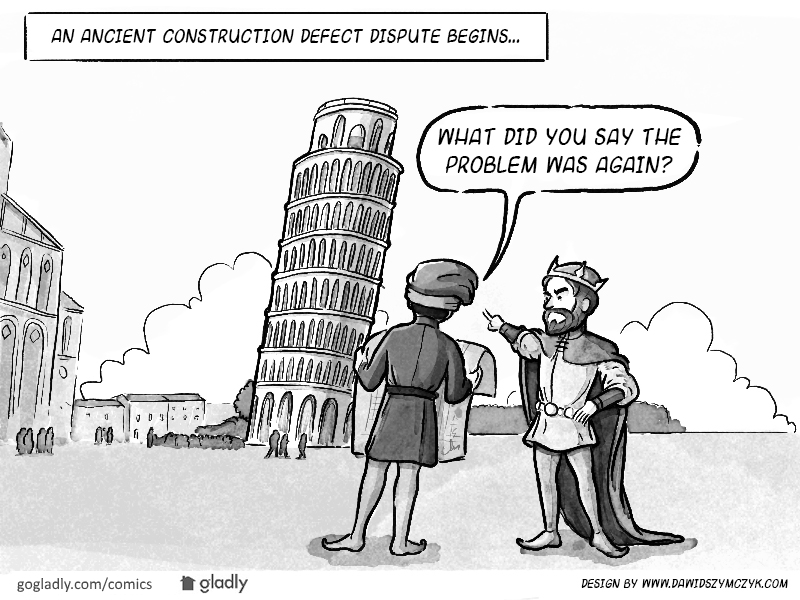Last year I was contacted by an HOA member in Draper Utah who discovered large mushrooms growing from his wall after rearranging some furniture.This discovery was the start of an HOA construction defect investigation.
The mushrooms resulted from moisture intrusion caused by faulty and defective construction on a home that was only 4 years old. In this case we were able to recover the necessary funds from the home-builder to repair the HOA construction defects, and remove the mold and mushrooms, without filing a lawsuit. Most HOAs are not so fortunate.
When an HOA board discovers HOA construction defects in the common property it’s faced with some very difficult decisions. Most often, the board is forced to select the lesser of multiple bad options:
- Ignore the defects and do nothing
- Levy large special assessments to repair the defects
- Borrow money to repair the defects and damage
- Initiate a construction defect lawsuit against the responsible parties
On first analysis, option #4 seems to be the clear winner. However, there are definite pros and cons to HOA construction defect litigation. Here are some important factors that every board should consider before filing a lawsuit.
Uncertainty in The Law
In Utah, like many states, an HOA’s ability to bring a claim for faulty constructions is relatively new. The fact is, there are no guarantees that you will win the case, and even if you win, the proceeds may not cover all of the costs.
It is critical that the HOA select lawyers who are knowledgeable about construction defect laws and the nuances of HOA law.
HOA Construction Defects Impact on Owners
During litigation, HOA projects who properly disclose the litigation and the defects to potential purchasers most likely will not qualify for FHA loans. The ongoing litigation may have a general chilling effect on unit sales and value
Sometimes these cases can take several years to play out in court. One case that I was closely involved with lasted over 7 years before the HOA was able to successfully recover enough funds to settle and dismiss the case.
Before initiating litigation, it is usually best to hold a member meeting and inform owners of the significant investment, the impact on the HOA, and the potential length of the case.
Litigation Costs — Direct and Indirect
Most HOAs do not have the funds necessary to pay a law firm its customary hourly rates throughout the litigation. As a result, construction defect litigation is overwhelmingly handled on a contingency fee basis. Some law firms cover the legal fees only, while others front the fees and the costs (filing fees, expert reports, documents and transcripts, etc.)
HOAs should read the contingency fee agreement carefully — while it may seem enticing for your law firm to front the hard costs in addition to the fees, an HOA will almost certainly be asked to reimburse such costs at the conclusion of the case.
The HOA should also be prepared to cover any shortfall in repair costs with a loan or special assessment in the event that the settlement or judgement is not enough to cover litigation and repairs.
Repairs — Now or Later?
The uncertainty in the law also makes it difficult to analyze an HOA’s probability of success in being able to recover the badly needed funds to fix the defective buildings. This presents an interesting challenge for an HOA. If an HOA repairs the defects at the outset of the case, it will remove many of the indirect costs discussed above. For example, FHA and other lending will not be an obstacle, owners will not be living in leaky and settling homes, etc. On the other hand, the HOA may never recoup the costs in the litigation.
In most cases, an HOA should repair defects now rather than waiting on the outcome of the case. Homeowners will be better served by having functional buildings, and the law firm representing you will be better equipped to recover the needed funds without having to estimate and speculate about the repair bill
Viability/Solvency of Defendants
HOAs that I advise frequently wonder whether a defect case is worth the hassle especially when their home-builder or developer has gone out of business or filed bankruptcy. You may be surprised that this may or may not ultimately impact the successful outcome of your case.
In many cases the insurance that the Developer/Builder maintained during construction may be obligated to cover the costs.
Conclusion
HOA directors have a fiduciary duty to their members to carefully and thoughtfully consider these and other important factors before commencing a construction defect lawsuit. While a successful lawsuit can save an HOA dealing with defects, it should not be seen as a magic solution or miracle remedy.
- Vacation Rentals in Your HOA - September 25, 2017
- Solar & HOAs — Who Has The Power? - June 15, 2016
- Is Construction Defect Litigation All It’s Cracked Up to Be? - November 3, 2015




 Help
Help